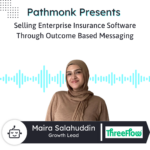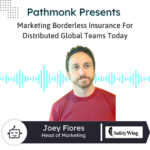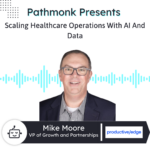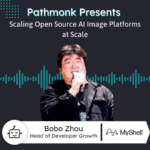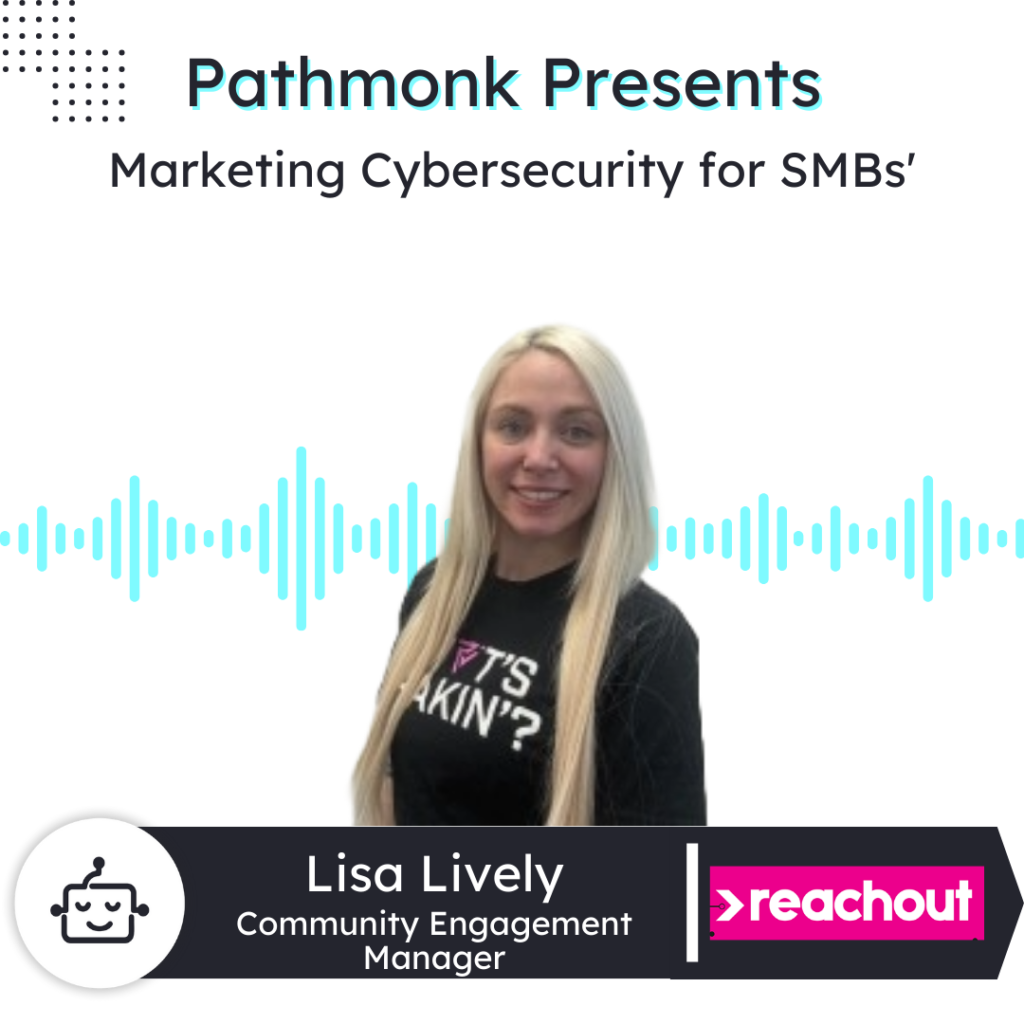
Introduction
In this enlightening episode, we welcome Lisa Lively, the Community Engagement Manager at Reach Out Technology.
Lisa discusses the company’s mission to bridge the cybersecurity gap for small to medium-sized businesses, led by founder and CEO Rick Jordan. Lisa shares valuable insights on marketing strategies, including the use of different marketing tools and the importance of leveraging existing software.
Her passion for networking and fostering authentic relationships shines through as she emphasizes the power of continuous learning and adapting to change in the fast-paced world of marketing and technology.
More Sales From Your Website With AI
Personalized interactions based on your users' behaviour to get +50% more conversions.
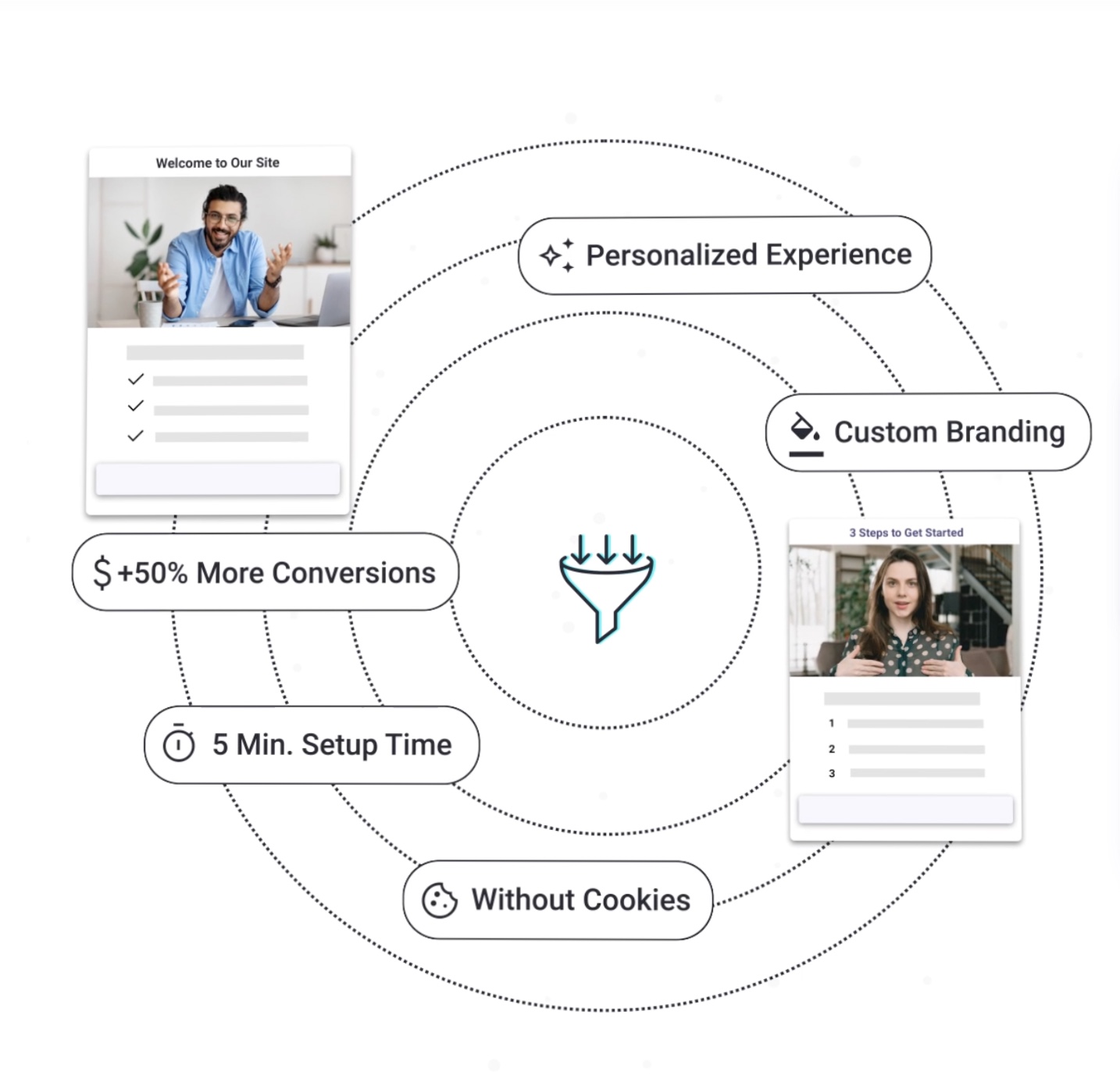
Ernesto Quezada: Pathmonk is the intelligent tool for website lead generation. With increasing online competition, over 98% of website visitors don’t convert. The ability to successfully show your value proposition and support visitors in their buying journey separates you from the competition online. Pathmonk qualifies and converts leads on your website by figuring out where they are in the buying journey and influencing them in key decision moments. With relevant micro experiences like case studies, intro videos, and much more, stay relevant to your visitors and increase conversions by 50%. Add Pathmonk to your website in seconds. Let the AI do all the work and get access to 50% more qualified leads while you keep doing marketing and sales as usual. Check us on pathmonk.com. Welcome to today’s episode. Let’s talk about today’s guest. We have Lisa out there with Rick Jordan at Reach Out. We’ll talk about it a little bit right now. Lisa is going to tell us a little bit more. She’s the community engagement manager there with Rick. Welcome, Lisa.
Lisa Lively: Yes, thank you so much for having me. I really appreciate the invite to come on and chat a little bit about what Rick and I do.
Ernesto: Definitely important. So let’s kick it off with that then, Lisa. Right. Can you tell us a little bit more about Rick Jordan, Reach Out, and what you guys are doing there?
Lisa: Yeah, for sure. So like you said, I’m Rick Jordan’s community engagement manager, and I help support a lot of the different endeavors that we do at Reach Out, both with the Rick Jordan personal brand. To give some back history, Rick is the founder and CEO of Reach Out Technology. It is the first publicly traded MSP that services the small to medium-sized business market. Our big goal on the cybersecurity side, the IT managed services side, is to create cybersecurity for all. When you see and look at a lot of the IT industry, you kind of see a big gap between big MSPs that service the enterprise that have a full wealth and stock of tools and vendors that they use to really accurately protect their clients, versus the small to medium-sized businesses who get serviced, and that stack isn’t as full. So you see a really, really big gap when it comes to the cybersecurity field. That was Rick’s mission when he first founded Reach Out Technology and started scaling it—he wanted to fill that gap because small to medium-sized businesses, the mom and pop shops that we all know, are a really, really large target for cybersecurity. So that’s the big thing on the cybersecurity company side.
As far as Rick’s personal brand goes, we’ve built it up over the last few years, and branding has made a very large impact on the success of Reach Out Technology and the overall success of Rick’s own personal brand. As far as his coaching, his podcast is in the top 2% in the world. We’ve definitely put a lot of effort into that to help mentor, educate, and give motivation to a lot of entrepreneurs, especially young entrepreneurs.
Ernesto: Definitely important. Glad to hear that from you, Lisa, and what you’re doing there in helping out Rick with all that business side. That way, our listeners who are tuned in can get a good understanding of Rick Jordan’s personal brand and the Reach Out Technology part. What would you say then is the key problem that you guys like to solve?
Lisa: Yeah, I guess the biggest thing that we like to solve on the security side, like I mentioned, is that big gap in the market right now. But on the other side, the flip side of the coin, just on the Reach Out side, and Rick’s mission as well, when he first started the walk into the publicly traded world, the stock market, is that he wanted to create generational wealth for owners. You see a lot of MSP owners, which is what we call it in our industry (the abbreviation for Managed Services Providers), that are taking $60,000 to $120,000 a year home. As a business owner, you see a lot of other business owners taking a lot more home than that. So what we offer is generational wealth. We want to get you in the door as an acquisition roll-up into our public entity, be a part of the team. A lot of people get really bogged down in all the things that come alongside business, and they start to forget why they went into business in the first place. They want to do the IT, not work on HR, payroll, or deal with the headaches of having to answer the phone at 9:00 at night or on a family vacation. That’s where we step in. We give them the opportunity to make the salary that they want to make, to be able to service their clients the best way they possibly can. That’s our big goal, to help the owners as well.
Ernesto: Definitely important. So then, I don’t want to assume here, but would that be what the vertical segment is? Is there an ideal ICP there for Reach Out or for Rick’s brand?
Lisa: So, I mean, we do look at, like, when we look at acquisitions, which I think is what I’m understanding your question to be, a lot of the private equity that are rolling up MSPs don’t really look at those underneath, like five or eight million, roughly. My numbers might be a little skewed, but they don’t look underneath that because they can’t turn them around and make a profit right away. So we look at those acquisitions, especially when they’re in what we would consider a pillar area. We’re based out of a couple of different states—Chicago, Illinois, Whitney, New Jersey, El Paso, Texas, and Phoenix, Arizona—so we have a lot of different markets that we hit. I hope that kind of answers your question. We look at areas that we can integrate right into us. We just completed an acquisition that I think had like nine or ten employees, and they’re in the Chicago area. So an acquisition like that is really easy to roll up into the existing entity because it’s already in a city where we exist. But it’s not that we don’t look outside of our current cities because we definitely do have other pillar areas that we want to hit.
Ernesto: Definitely important. All right, thank you so much for sharing that. What would you say then is the top client acquisition channel for you guys? What’s the one that gives you the best results?
Lisa: Yeah, I think the best way when it comes to trying to find your target acquisition is to understand what you’re selling and understand how you appear to your clients. So when I look at it right now on the personal brand for Rick Jordan, we have a great initiative going forward that’s called freemspmarketing.com, and what that offers is to join a waitlist. There are a lot of MSPs that are looking for materials to grow, and maybe they’re trying to get to the position where they are most cost-efficient and their EBITDA is where it needs to be to be a top sale and get the dollar that they want for their business at the end of the day. We see a lot of different people in the IT space that charge thousands of dollars a month for these materials, and we want to be able to assist them. So we really take advantage of our current market, our current audience, our current peers because there are a lot of people within your community that you can help, that would be your side by side. Being able to reach out to them and say, “Hey, we’ve been in your shoes, we’ve felt your pain, we’ve experienced these same scaling issues that you are. Let us help you, and we’re not going to let a dollar amount stand in the way of you being able to grow your business.”
Ernesto: Definitely important. Thank you so much for sharing that. So then on that note, so that way our listeners who are tuned in can go ahead and visit you as far as the cybersecurity technology, you can always check them out at reachoutit.com. And for Rick Jordan’s brand, you can always check him out at rickjordan.tv. What role does the website play then for client acquisition?
Lisa: Yeah, so we actually use a super cool website designer called Clickfunnels. I’m assuming you’re maybe slightly familiar with Clickfunnels, but we host almost all of our initiatives on there. There’s just so much opportunity to convert a lead into an acquisition, no matter what the target is, using a sales letter. I’ve been to Funnel Hacking Live for the past three years now, and I’ve learned a lot. But just creating a story, a hook, and an offer in your sales letter and your sales copy going along, you kind of remove the excess of all the stuff that’s on your website. So if you look at Rick Jordan TV or reachoutit.com, you’re going to see a lot of information—a lot of information about Rick, a lot of information about the company, and all of that good jazz. But we love to market through Clickfunnels because when we have one initiative, we’re just marketing that one initiative. No one’s going to get distracted on the website or anything along those lines. They’re going to see exactly what we’re offering. So we really take a lot of advantage out of Clickfunnels and have for the past three or four years.
Ernesto: That’s great, great to hear. That’s a tip there for everybody. Would there be another method that you guys use besides Clickfunnels that you would recommend to our listeners?
Lisa: Yeah, I mean, there are so many different softwares out there, but I think there’s something that a lot of people don’t realize, which is that you have a great tool in front of you. And I won’t use Clickfunnels here as an example, but I’ll use, say, ActiveCampaign. If you’re not familiar with ActiveCampaign, it’s an email marketing software, CRM. You can reach out to everyone that way. You can use it for email marketing, data analytics, surveys, contact management—there’s so much inside of ActiveCampaign. When you look at a software like that, which you use in your everyday stack in the MSP industry—it’s my personal little marketing stack—you don’t really realize what’s all offered in one software. So really take advantage of their free tutorials, their LinkedIn Lives, their Facebook Lives, or their Zoom meetings that they might have once a week. Dive in on how to use other parts of the software that you might not be using to your full advantage. I think it’s really important to just look at what you already have because there might be a gap you have and are trying to search for an answer for, and you already have the answer. You just don’t know that it exists in your current software.
Ernesto: All right, interesting take. Thank you so much for sharing that with us, Lisa. And, well, let’s switch gears a little bit and let’s talk about you. It sounds like you already have a full plate, but what do you focus on in your day-to-day work there with Rick and Reach Out?
Lisa: Yeah, my day-to-day is really interesting. I do a lot of different event planning and, obviously, my resume. I’m also Rick Jordan’s podcast manager. My biggest thing is fostering current relationships because I think there’s a lot to learn from the people that are around us that we might not be asking the questions to. So I really try to continue to foster those relationships. There are people that I’ve met from a year ago that I still stay in contact with and exchange information with. If there’s someone that can fulfill a need that’s in a different room, but I know someone that’s in that room, I want to have that conversation to spark that connection that might not exist. I think there’s a lot of power in networking, so I try to stay on top of that. Stay in touch with the people that you meet. If someone has an interesting niche, keep track of that. I use monday.com and I track everyone that I’ve known and met over the past couple of years, understand what their field is, how I can help them, and how they can help me. I always want to be able to supply feedback and opportunity back to them as they give it to me because that’s the real power in networking. It’s not a one-sided panel; it’s a two-sided panel. Just making sure that conversation is always fair and authentic.
Ernesto: Awesome to hear that from you, Lisa. So then, on that note, whenever there is some time available in your day-to-day, how do you stay up to date with all the marketing news, trends, strategies out there? Is there a preferred channel that you like to go with?
Lisa: Yeah, I definitely take advantage of LinkedIn. There are a lot of different things on LinkedIn, and there’s a lot of, like I said earlier, LinkedIn Lives—hop on something that’s within your industry, especially people that are wanting to spark conversation with live Q&A because it’s very interactive. But I mean, the oldest tutorial place in the world is YouTube, so take advantage of YouTube. There’s so much information on YouTube, and like I said before about ActiveCampaign, it’s the same with, say, Zapier when you’re looking at automating stuff. There’s still so much information even within their own database, within their own weekly calls that they educate their client base with. Definitely take advantage of those. And if you don’t have the time, which I totally understand, register yourself and take a recording of it, put it into AI, and have it summarize it for you so you at least have some way to take that information in, even if you don’t necessarily have the time, because it could be a lot easier to read a quick few sentences than hop on a call.
Ernesto: Definitely important. I think you mentioned something right. It could either be going for LinkedIn or if you already have, in this case, like we mentioned, a Funnel Hacker and you’re paying for something, but you could go as far as YouTube where it’s free and you could just find news, right? So everything’s out there for everybody.
Lisa: There’s so much free information out there that we definitely need to take advantage of that we haven’t even tapped into yet.
Ernesto: Definitely. All right, awesome. And, well, let’s jump into our next section here, Lisa, which is our rapid fire question rounds. Are you ready for them?
Lisa: I’m ready. Let’s go.
Ernesto: All right, first off then, Lisa, what is the last book that you read?
Lisa: Oh, man. I think when I looked through some of the questions that you sent over, I know I put “Winning” by Tim Grover, and it’s between “Winning.” I don’t remember exactly which one I read last, but if I had to say my last book, I’d probably just throw in there it was “Winning” by Tim Grover, and it was an amazing book. But I also read “The Subtle Art of Not Giving a F” by Mark Manson, I believe it is. And I’d probably say that had a little bit more of an influential piece than “Winning” did, at least.
Ernesto: Okay, perfect. Great read there for our listeners. Next up, Lisa, is if there would be no boundaries in technology, what would be that one thing that you want to have fixed for your role as a marketer today?
Lisa: Yeah. Man, there’s so many different random things that I could say that I could fix. But as a very pivotal person in Reach Out and Rick’s brand, I work on a ton of different initiatives at once. I know we chatted a little bit about this before we hopped on the call, but there is our Free MSP Marketing. We have our M&A Sellers Dinners for MSPs looking to sell. We have VIP dinners for people looking to get networking experience, and we have channel events and all of these different things. But each time that we create something new, we start from scratch. It could be a little similar. I mean, if there was a way that I could automate that a little bit better, which I’m sure there is, and I just haven’t found it yet, because I have to start from scratch. Create all those email campaigns, create all the tagging, create everything that connects everything. When one action’s done on one site, what happens to the next? How do we get reported? Who gets notified? A lot of those steps have to be created from scratch each time you do a different initiative. So I’m sure there’s something out there somewhere that can solve my problem. I just haven’t found it yet.
Ernesto: Yep. And if someone’s listening, right, reach out to Lisa.
Lisa: Yes, yes. Find me on LinkedIn. I’ll be there.
Ernesto: Awesome. Next up, is if there’s one repetitive task that you could automate, what would that be?
Lisa: Oh, man, there’s got to be something out there somewhere. But I definitely do document a lot of things. I’ve worked with some really, really cool individuals over the past couple of years—our VP of operations, Ryan, and then our VP of M&A, Ashley. But one thing that I’ve really learned is organization is key. Organization and documentation are key. And I think one thing that when you read through stuff is that everyone interprets something differently if it’s written in different verbiage. So you could read one book, and someone can read it and be like, “I didn’t get that out of that.” So I don’t really understand how that was beneficial for you. It’s the same thing with documentation and explaining how you complete a specific task. So when I write out documentation, I try to make it just as point-blank and direct as possible. But not everybody takes verbiage like that when they’re consuming it as knowledge. So I think the best thing to automate that and make it easier for me and for the people that would read those tasks is to be able to rewrite it very quickly and learn how someone else interprets something. So when somebody else reads it, it could interpret it the way that they need to read it as. Because there’s a lot of documentation that I write for all the different initiatives that we do, and it can get confusing, and I don’t want anyone else to get confused along the way.
Ernesto: Definitely important. All right, awesome. Thank you so much for that. And, well, lastly, Lisa, I mean, you’re already a marketing expert, right? But what is that one piece of advice that you would give yourself if you were to restart your journey as a marketer today?
Lisa: Oh, man. I’ve done a lot in my career as a 27-year-old. I feel like I’ve definitely done it all. I feel like at least I’ve been a service writer at a car dealership, I’ve been a cold caller, I’ve been a receptionist, I’ve been a credit card analyst, a podcast host, now a community engagement manager. So I’ve really done a whole bunch of different things in my career. But I think one of the most uncomfortable things when I first at least started with Reach Out was the fear of change. But change is what breeds growth. So I know a lot of people getting into this field get overwhelmed because there are so many different things to learn. One person says one thing, and another person says another. So it can get really complicated really fast. Just remember that sentence of where fear is, it breeds growth because it’s where you’re uncomfortable that you’re going to be able to grow and take advantage of what you don’t understand and be open-minded, be authentic, and transparent. Let people do that for you as well, taking all the information you can. If one person says one thing, go listen to another person as well and learn how to process everything and document it and understand it, because it’s going to be confusing. And all I want to say is good luck, and you can do it.
Ernesto: Awesome. Some great advice there, not just for yourself, but for our listeners. Thanks so much for that, Lisa. We are coming to the end of today’s show. But before we do end, I do want to give you the last word. If someone forgets everything about the interview today, what is that one thing they should remember about the company?
Lisa: There’s one thing that I said. When you’re trying to convey something to your clients and what we do and what we’ve been successful in doing, it’s creating that story, the hook, and the offer in whatever you’re trying to sell and making sure it’s relatable. So you can have a story, a hook, and an offer, but if you’re not making it relatable to your audience, you’re not going to convert any leads. So make sure to test out different variables and understand what works and what doesn’t work. It takes time, so just be patient.
Ernesto: Definitely important. Thank you so much for sharing that with us.
Lisa: Of course.
Ernesto: Well, Lisa, it’s been a pleasure to have had you on with us today. I do appreciate you being out with us, and to our listeners, thank you so much for tuning in. I’m looking forward to our next episode at Pathmonk Presents. Thanks a lot, Lisa.
Lisa: Yes, thanks so much.




